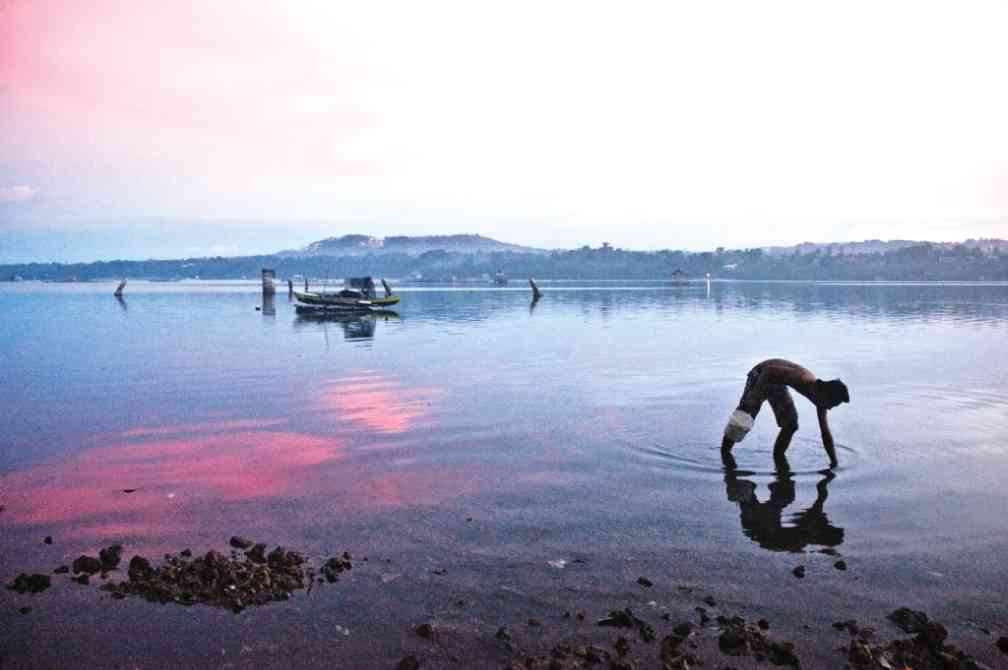
FILE PHOTO: Residents collect seashells despite a red tide scare in Tagbilaran Bay, Bohol. In the background is Dauis town in Panglao Island. The BFAR has already banned the gathering and sale of shellfish from areas in Bohol contaminated with red tide toxins. | SHERWIN SAPONG/CEBU DAILY NEWS
MANILA, Philippines — The Department of Health (DOH) alerted the public on Saturday that some coasts and bays in the country are affected by paralytic shellfish poison or toxic red tide.
In a statement, the health department said that all types of shellfish, such as mussels, oysters, clams, and alamang gathered from the following areas are not safe to eat:
- Coastal waters of Milagros in Masbate
- Coastal waters of Dauis and Tagbilaran City of Bohol
- Coastal Waters of San Benito in Surigao del Norte
- Dumanquillas Bay in Zamboanga del Sur
- San Pedro Bay in Samar
- Matarinao Bay in Eastern Samar
READ: ‘Irreparable harm’: China intrusion’s impact on West Philippine Sea ecosystem
“Fish, squids, shrimps (except their heads) and crabs are safe to eat so long as they are fresh and washed thoroughly, and internal organs such as gills and intestines are removed before cooking,” the DOH said, noting that the advisory was based on Department of Agriculture – Bureau of Fisheries and Aquatic Resources Shellfish Bulletin No. 05, series of 2024, issued on Friday.
The DOH also warned that signs and symptoms of paralytic shellfish poisoning or red tide poisoning have a rapid onset and can be felt within 12 hours after consuming the unsafe shellfish.
Among its symptoms are “numbness around the mouth or face; dizziness; pricking sensation and/or paralysis of hands and feet; body weakness; rapid pulse; difficulty talking, swallowing, or breathing; and headache.”
READ: Red tide alert up in Madridejos; Consumers, fisherfolk warned
There may also be abdominal pain, diarrhea, and vomiting associated with red tide poisoning, the DOH added.
Health Secretary Teodoro Herbosa advised patients with symptoms to go to the nearest emergency room.
“Prevention is the best: do NOT eat tahong, talaba, halaan, other shellfish, and alamang from areas identified with toxic red tide. Always read advisories from DA-BFAR and the DOH. All hospitals are directed to prepare for these cases and to report them accordingly,” he said as quoted in the statement.
READ: DOH – Bicol: Watch our El Niño – related illnesses